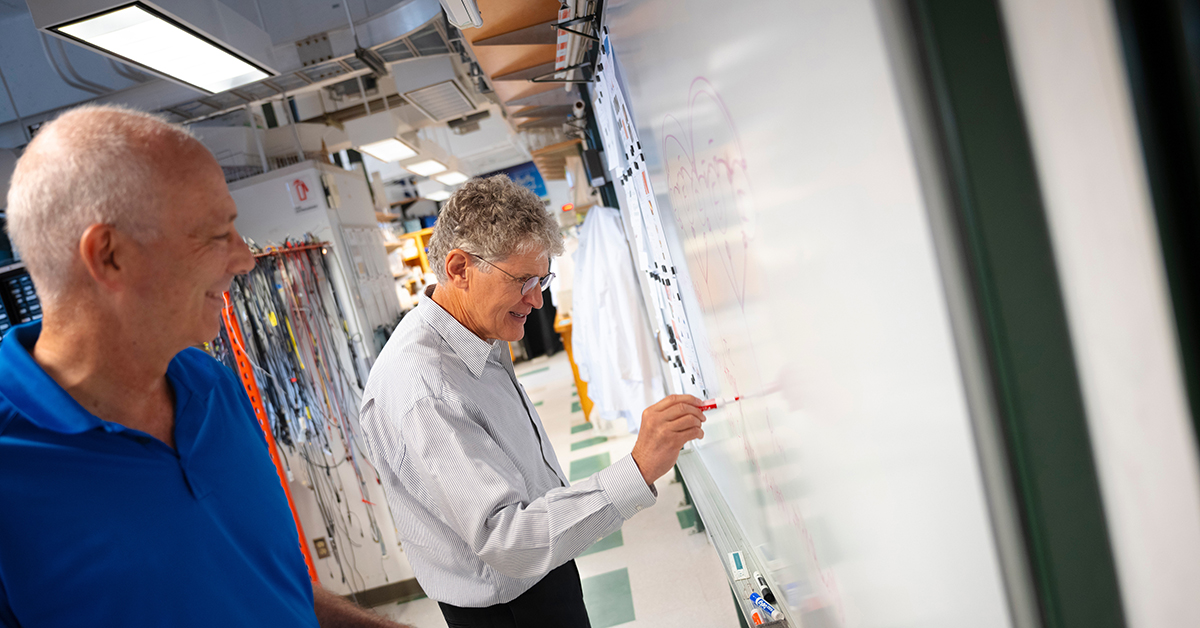University of California San Diego Distinguished Professor of Physics and Neurobiology David Kleinfeld is a leading expert in sensory processing and mouth-face-head movements. Through a highly competitive process, a new $21 million grant from the National Institutes of Health (NIH) will allow him and a team of researchers to continue studying the coordination of multiple sensory inputs and head movements using laboratory mice and rats.
The NIH’s Brain Research Through Advancing Innovative Neurotechnologies (BRAIN) Initiative supports scientific research that will uncover a new, dynamic picture of the brain showing how individual cells and complex neural circuits interact in both time and space. Kleinfeld’s team was one of only a handful receiving grants from the initiative this year.
“This NIH grant is a tremendous achievement that further showcases the immense talent of our faculty for groundbreaking research and collaboration across universities and disciplines,” said Chancellor Pradeep K. Khosla. “David’s work will move us even closer to unlocking one of the universe’s great mysteries: the brain.”
Reverse Engineering the Brain
Over a decade ago, Kleinfeld and colleagues began investigating rat whiskers — called vibrissae — and the underlying nerve circuitry. They discovered that the motor nerves moving the vibrissae are separate from the sensory nerves receiving the signal from the environment, even though the two were exquisitely attuned to each other.
Over the next 10 years, through a series of research endeavors, the team was able to work out the neurocircuitry in considerable detail. They learned that the movement of the vibrissae, as well as the licking of the tongue — which can act as a sort of one-fingered hand in rodents — were ultimately coordinated by the pre-Bötzinger complex, a region of the brainstem that also regulates respiration.
This coordination occurs as a hierarchy of controls, and the research under the NIH grant will investigate the hypothesis that rodent facial and head movements are controlled by both low-order and high-order brain activity. At the low level, a series of interacting oscillators in the brainstem control the sensations associated with the head, while high-level control associated with the motor cortex fine tunes the relative movement of the head, tongue and vibrissae.
The grant proposal is broken up into five modules, each led by a different research team and each studying a different aspect of the rat’s sensory processing system that, when combined, will provide a clearer understanding of the underlying neurocircuitry.
The grant is focused on basic science and Kleinfeld hopes that at the end of the decade, the team will have developed a few fundamental principles that refine our current understanding of neurocircuitry through reverse engineering.
When building an electronic device, engineers are guided by principles in materials science, thermodynamics and electricity to create a useful product. When it comes to the brain, we have a complex, high functioning product but so much of how and why it works is still unknown.
“I would say it’s a little bit like deconstructing circuitry. I’m not trying to turn a living brain into a machine, but at some level, the metaphor works,” Kleinfeld said. “You’re presented with behaviors, and you want to work your way backwards to understand the wiring that generates these behaviors from the stream of sensory input. This is what we’re trying to do.”



